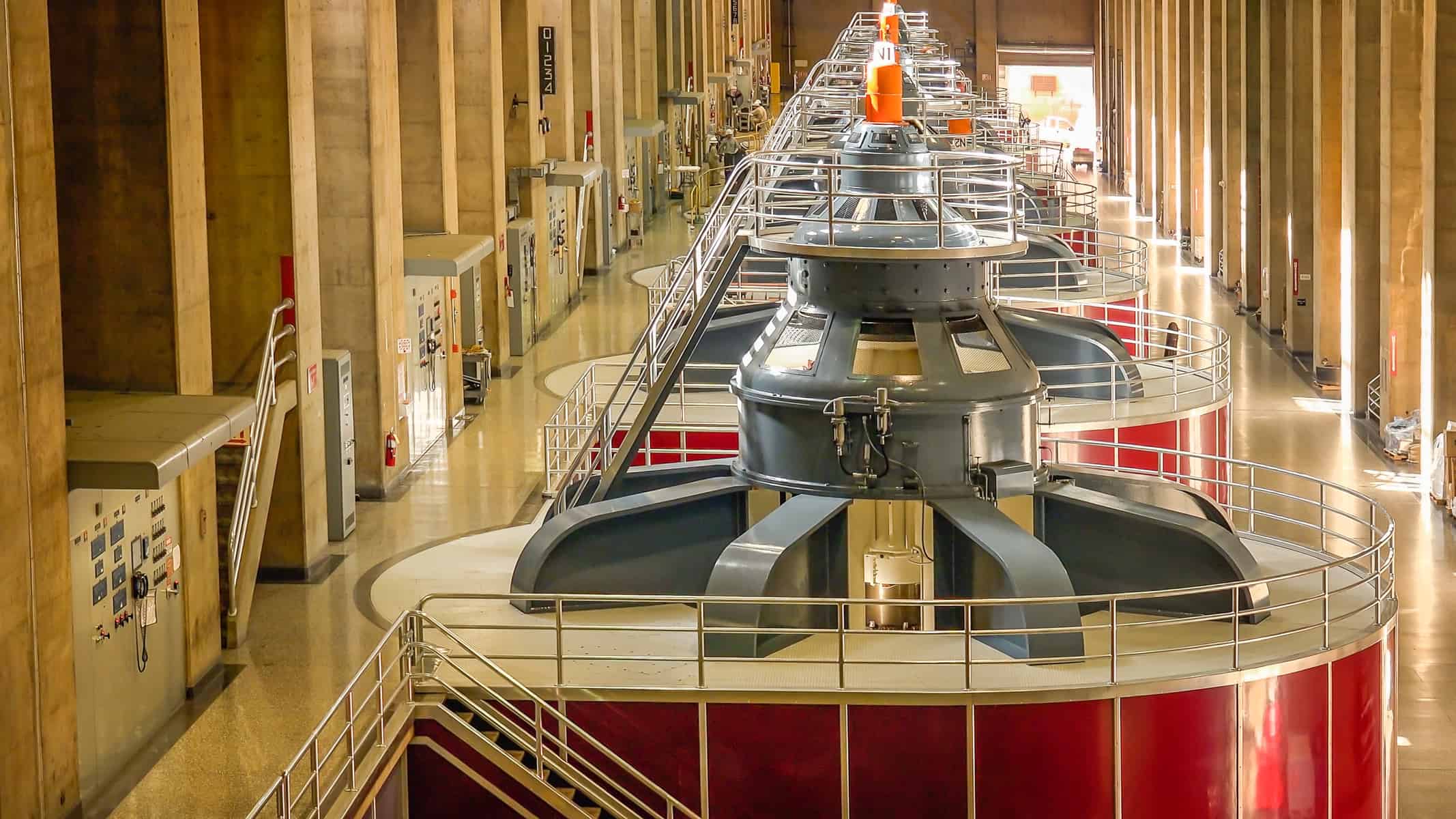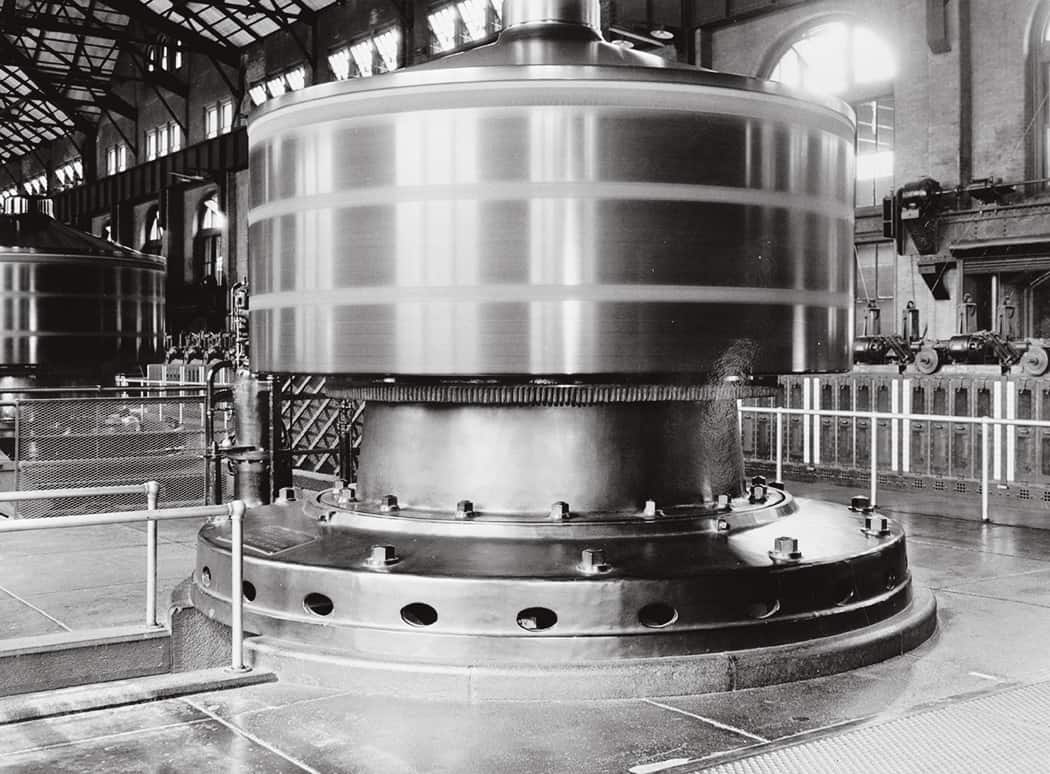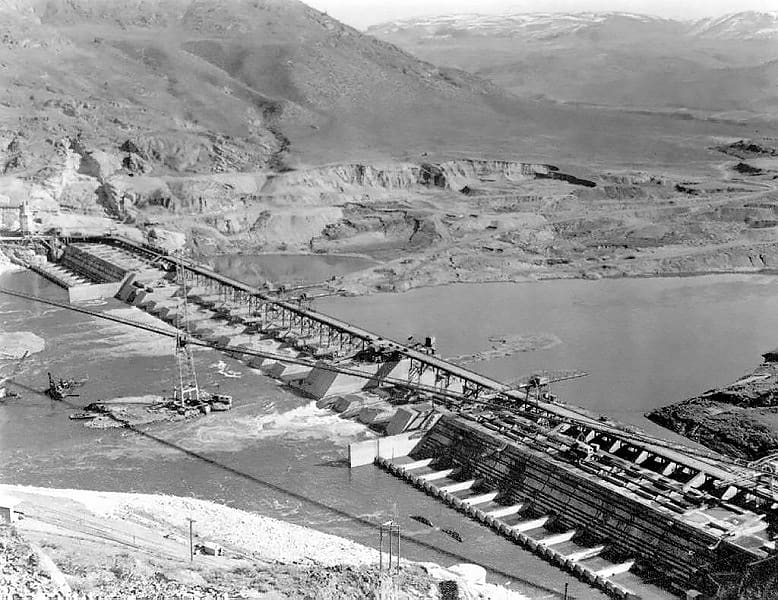
Overall, about 15% of the world’s water is for producing or using energy in one form or another.1International Energy Agency, World Energy Outlook 2012 (Paris: Organization for Economic Cooperation and Development, 2013). While hydroelectric dams appear on the landscape as an obvious use of water for energy, other parts of the energy supply chain also rely on water for a variety of purposes. For example, extractive industries producing fuels such as coal, uranium, oil, and gas use water for flushing fluids out of the ground, controlling dust at mines, or separating out the minerals. In addition, water is an input for energy crops such as corn for ethanol or biomass for fuel pellets. Thermoelectric power plants rely on water for cooling to increase the efficiency of their turbines. In general terms, the use of water improves the energy sector. However, the interdependence of the water and power sectors introduces a major vulnerability to both systems.
The first hydroelectric power plant at Niagara Falls diverted naturally flowing water into the powerhouse without the use of a reservoir.


Built in 1895 in Niagara Falls, New York, the Edward Dean Adams Power Plant was the first large-scale, alternating current electric generating plant in the world. Ten Westinghouse generators provided 37 megawatts of electric power until the plant closed in 1961.
In the United States, the installation of hydroelectric dams accelerated due to economic recovery efforts during the Great Depression and to the military effort of World War II. The Great Depression created the economic motivation for large public works projects, while the war created the demand for electricity. In the 1930s, jobs were scarce, and politicians viewed large water projects as a way to employ the masses while achieving other useful benefits such as providing power and meeting the needs for navigation, commerce, recreation, flood control, and water storage.
This era is when the Hoover Dam (initially named the Boulder Dam) and several other prominent hydroelectric dams—the Shasta and the Grand Coulee—were started. The multi-faceted benefits of dams justify their construction even today. For example, the Sardar Sarovar Dam in India was designed to provide irrigation for one million farmers, drinking water for 29 million people, 1.5 gigawatts (GW) of power, and five thousand new jobs.2 “Project At A Glance,” Sardar Sarovar Narmada Nigam Ltd., last modified August 23, 2016, accessed May 24, 2015, link.

The simple design of a hydroelectric dam allows for 90% or higher conversion efficiency from the potential energy of the elevated water to electrical energy at the power house.3U.S. Army Engineer Institute for Water Resources, Hydropower: Value To The Nation (Arlington, Virginia: U.S. Army Corps of Engineers, 2009), accessed August 27, 2016, link. This performance far exceeds the typical 30% to 40% efficiency of conventional thermal power plants.
Although hydropower does not burn fuels to generate electricity, hydroelectric dams emit greenhouse gases through their life cycle. Machinery and manufacturing involved in construction have emissions. Furthermore, large reservoirs release significant amounts of methane from the anaerobic decomposition of organic biomatter beneath the water.4Bobby Magill, “Methane Emissions May Swell From Behind Dams,” Scientific American, October 29, 2014, accessed January 1, 2016, link; and Siyue Li and X. X. Lu, “Uncertainties of carbon emission from hydroelectric reservoirs,” Natural Hazards 62 (2012), 1343–1345, accessed August 27, 2016, doi: 10.1007/s11069-012-0127-3. Unfortunately, estimating how much gas bubbles out of the reservoirs is very difficult and rife with uncertainty.
Image Credits: CrackerClips Stock Media/Shutterstock.com; Library of Congress/public domain; U.S. Bureau of Reclamation/public domain.
Update your browser to view this website correctly.Update my browser now